Garden Maintenance in Catford: Your Ultimate Guide to a Thriving Green Space
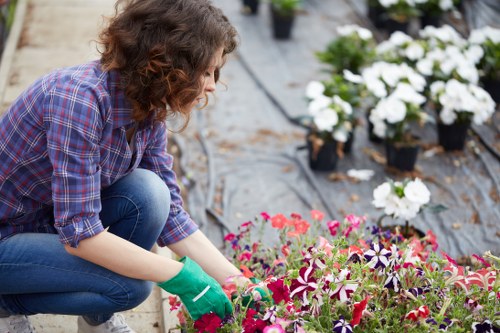
Maintaining a vibrant and healthy garden in Catford requires a blend of passion, knowledge, and the right strategies. Whether you’re a seasoned gardener or just starting out, understanding the unique aspects of Catford’s climate, soil, and local flora is essential for creating a flourishing outdoor space.
Catford, located in the heart of South London, boasts a temperate climate that offers favorable conditions for a wide variety of plants. However, successful garden maintenance goes beyond just planting; it involves regular care, strategic planning, and a bit of creativity.
In this comprehensive guide, we’ll explore the best practices for garden maintenance in Catford, providing you with actionable tips to keep your garden in top shape all year round.
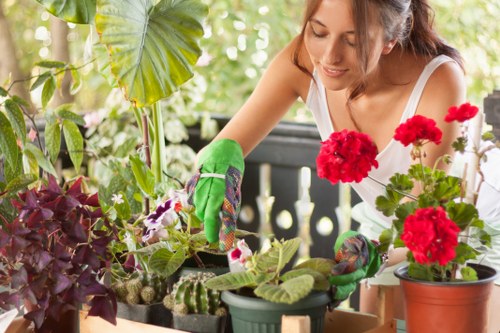
Understanding Catford’s Climate
Catford experiences a temperate maritime climate, characterized by mild winters and warm summers. This climate is ideal for a diverse range of plants, but it also means that gardeners need to be mindful of seasonal changes to ensure their gardens thrive.
The average annual rainfall in Catford is around 600mm, which is fairly distributed throughout the year. This consistent moisture level supports a variety of plant life but also requires effective drainage solutions to prevent waterlogging during heavy rains.
Pro Tip: To maximize the benefits of Catford’s climate, choose native plants that are well-adapted to the local weather conditions. Native species often require less maintenance and are more resilient against pests and diseases.
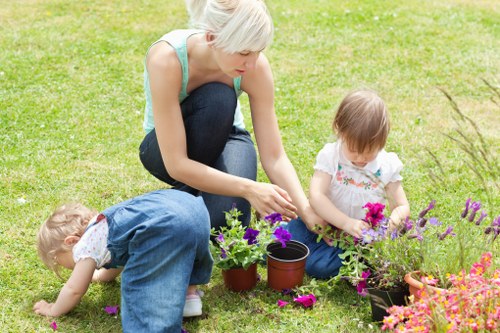
Soil Preparation and Health
The foundation of any successful garden lies in healthy soil. Catford’s soil typically ranges from loamy to clay, providing a solid base for most types of plants. However, it’s crucial to assess your garden’s specific soil composition before planting.
Improving soil health involves regular testing to check for pH levels and nutrient content. Based on the results, you can amend your soil with organic matter such as compost or manure to enhance its fertility and structure.
Key Steps for Soil Preparation:
- Conduct a soil test to determine pH and nutrient levels.
- Add organic compost to improve soil texture and fertility.
- Incorporate mulch to retain moisture and suppress weeds.
- Ensure proper drainage to prevent waterlogging.
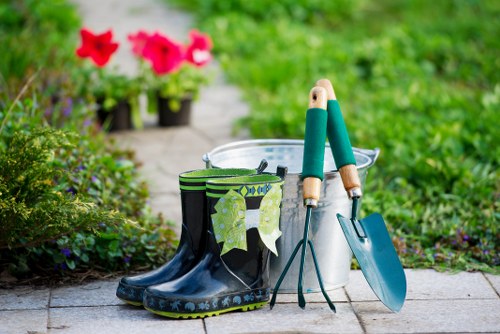
Plant Selection and Placement
Choosing the right plants is crucial for a sustainable and low-maintenance garden. In Catford, opt for a mix of perennials, annuals, shrubs, and trees that complement each other and the local environment.
Consider the specific needs of each plant, including sunlight exposure, water requirements, and growth patterns. Grouping plants with similar needs can simplify your maintenance routine and promote healthier growth.
Popular Plant Choices in Catford:
- Lavender: Thrives in sunny spots and requires minimal watering.
- Hostas: Ideal for shaded areas and known for their attractive foliage.
- Roses: A favorite for their beauty and fragrance, needing regular pruning and care.
- Japanese Maple: Adds a stunning focal point with its unique leaf structure.
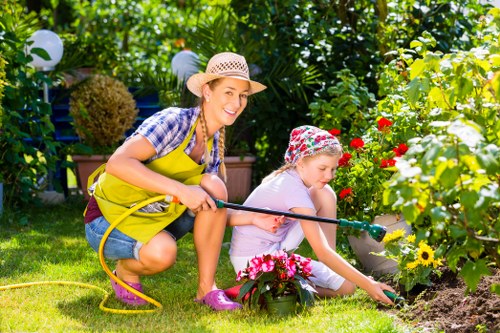
Seasonal Garden Maintenance Tips
Maintaining your garden throughout the year requires adapting your care routine to the changing seasons. Each season presents its own set of challenges and opportunities for garden enhancement.
Spring: Focus on planting new flowers, pruning shrubs, and cleaning up garden debris left over from winter. This is also the best time to fertilize your plants to encourage robust growth.
Summer: Prioritize regular watering, especially during dry spells. Mulching can help retain soil moisture, and deadheading flowers encourages continuous blooming.

Autumn:
Prepare your garden for the colder months by harvesting late-season vegetables, planting bulbs for spring, and protecting sensitive plants from frost. Raking fallen leaves and composting them can enrich your soil for the next planting season.
Winter: While the garden may be less active, it’s still important to monitor plant health, prune any dead branches, and plan for the upcoming year. Using protective covers can safeguard delicate plants against harsh weather conditions.
Don't forget: Regularly check your garden structures, such as fences and trellises, to ensure they remain sturdy and secure throughout the year.

Pest and Disease Management
Keeping pests and diseases at bay is a critical aspect of garden maintenance. In Catford, gardeners may encounter common pests like aphids, slugs, and snails, as well as fungal diseases that can affect plant health.
Implementing an integrated pest management (IPM) approach can help control these issues effectively. This involves monitoring pest populations, encouraging beneficial insects, and using organic or chemical treatments only when necessary.
Effective Pest Control Strategies:
- Introduce natural predators such as ladybugs and lacewings.
- Use neem oil or insecticidal soap for organic pest control.
- Remove garden debris to reduce hiding spots for pests.
- Rotate crops to prevent the buildup of pests specific to certain plants.

Preventing Plant Diseases:
Maintain plant health by ensuring adequate air circulation, proper watering practices, and avoiding overhead irrigation, which can promote fungal growth. Regularly inspect your plants for signs of disease and remove affected parts promptly to prevent spread.
Common Plant Diseases in Catford:
- Powdery Mildew: Often affects roses and other flowering plants, characterized by a white powdery coating on leaves.
- Leaf Spot: Causes discolored spots on leaves, which can lead to leaf drop if untreated.
- Root Rot: Results from overwatering and poor drainage, leading to weakened plant roots.
By staying vigilant and proactive, you can minimize the impact of pests and diseases on your garden.

Pruning and Trimming Techniques
Regular pruning is essential for maintaining the shape, health, and vigor of your plants. Proper trimming encourages new growth, improves air circulation, and enhances the aesthetic appeal of your garden.
Different plants require different pruning techniques. Understanding the specific needs of each plant type will help you achieve the best results without causing harm.
Basic Pruning Tips:
- Remove dead or diseased branches to prevent the spread of infections.
- Thin out overcrowded areas to improve light and air penetration.
- Cut back overgrown branches to maintain the desired shape and size.
- Prune flowering plants after they’ve bloomed to encourage future blooms.

Tools of the Trade:
Having the right tools is crucial for effective pruning and trimming. Invest in high-quality shears, loppers, and pruning saws to make the job easier and more precise.
Regularly clean and maintain your tools to ensure they remain sharp and free from rust, which can cause damage to plants and reduce the lifespan of your equipment.
Remember: Safety first! Always wear protective gloves and eyewear when handling pruning tools to prevent injuries.

Irrigation and Water Management
Efficient water management is vital for a sustainable garden. In Catford, where rainfall is moderate, supplementing with additional watering during dry periods ensures your plants receive the necessary moisture to thrive.
Implementing an effective irrigation system can save water and time. Options include drip irrigation, soaker hoses, and automatic sprinklers, each offering different levels of control and efficiency.
Watering Best Practices:
- Water early in the morning or late in the evening to reduce evaporation.
- Avoid overwatering by checking soil moisture levels before watering.
- Use mulch to retain soil moisture and reduce the need for frequent watering.
- Group plants with similar water needs together for more efficient irrigation.

Rainwater Harvesting:
Consider setting up a rainwater harvesting system to collect and store rainwater. This eco-friendly approach not only conserves water but also provides a natural alternative for your garden’s irrigation needs.
Using rain barrels or larger storage tanks, you can capture runoff from your roof and other surfaces, ensuring a steady supply of water during dry spells.
Benefits of Rainwater Harvesting:
- Reduces dependency on municipal water supplies.
- Minimizes water bills.
- Promotes sustainable gardening practices.
- Provides unchlorinated water, which is beneficial for plant health.

Weed Control and Maintenance
Weeds can quickly take over a garden, competing with your plants for nutrients, water, and sunlight. Effective weed control is essential for maintaining the health and appearance of your garden in Catford.
Adopting a multi-faceted approach to weed management ensures long-term success. Combining manual removal, mulching, and the selective use of herbicides can keep your garden weed-free.
Top Weed Control Methods:
- Mulching: Applying a thick layer of organic mulch suppresses weed growth by blocking sunlight.
- Manual Removal: Regularly inspect your garden and hand-pull weeds before they establish deep roots.
- Mulch Film: Use landscape fabric or plastic sheets to prevent weed growth while allowing air and water to reach the soil.
- Herbicides: Apply selective herbicides carefully to target specific weeds without harming desirable plants.

Preventative Measures:
Preventing weeds from establishing in the first place is often easier than removing them later. Incorporate preventative strategies such as dense planting and regular garden clean-ups to minimize weed growth.
Dense Planting: Planting closely spaced plants can shade the soil, reducing the chances of weed seeds germinating.
Regular Maintenance: Keep your garden tidy by removing fallen leaves, plant debris, and other organic matter that can serve as a breeding ground for weeds.

Fertilizing and Nutrient Management
Providing your plants with the right nutrients is fundamental to their growth and productivity. Fertilizing your garden in Catford ensures that plants receive essential elements like nitrogen, phosphorus, and potassium.
Choosing the appropriate type of fertilizer—organic or synthetic—depends on your gardening philosophy and the specific needs of your plants. Organic fertilizers improve soil health over time, while synthetic options offer quick nutrient boosts.
Fertilizing Tips:
- Conduct a soil test to determine nutrient deficiencies.
- Apply fertilizers during the growing season to support active plant growth.
- Avoid over-fertilizing, which can lead to nutrient runoff and environmental harm.
- Incorporate compost and other organic matter to naturally enhance soil fertility.

Organic vs. Synthetic Fertilizers:
Organic fertilizers, such as compost, manure, and bone meal, release nutrients slowly, promoting steady plant growth and enhancing soil structure. They also encourage beneficial microbial activity, which is vital for soil health.
Synthetic fertilizers, on the other hand, provide immediate nutrient availability, which can be beneficial for quick plant boosts. However, they require careful application to prevent nutrient imbalances and environmental contamination.
Choosing the Right Fertilizer: Consider the specific needs of your garden and your long-term soil health goals when selecting fertilizers. A balanced approach often yields the best results.

Practical Garden Maintenance Schedule
Establishing a regular maintenance schedule helps keep your garden organized and ensures that no essential tasks are overlooked. Here’s a seasonal breakdown to guide your efforts throughout the year in Catford.
Spring:
- Clean and prepare garden beds.
- Plant new flowers, vegetables, and shrubs.
- Prune trees and shrubs before new growth starts.
- Apply organic fertilizers to boost soil fertility.
Summer:
- Regularly water plants, especially during dry spells.
- Mulch garden beds to retain moisture and suppress weeds.
- Deadhead spent flowers to encourage continuous blooming.
- Monitor for pests and diseases, taking action as needed.

Autumn:
- Harvest remaining produce and remove dead plants.
- Plant bulbs for spring blooming.
- Rake leaves and compost them to enrich the soil.
- Prune perennials and prepare plants for winter.
Winter:
- Plan your garden layout and order seeds for the next season.
- Protect sensitive plants with mulch or covers.
- Maintain garden tools and equipment.
- Monitor for any winter damage and make necessary repairs.

Tools and Equipment for Effective Maintenance
Having the right tools can make garden maintenance tasks more efficient and less labor-intensive. Investing in quality equipment not only enhances your gardening experience but also ensures better results.
Essential Garden Tools:
- Pruning Shears: Ideal for trimming small branches and shaping plants.
- Loppers: Perfect for cutting through thicker branches.
- Garden Fork: Useful for turning soil and aerating garden beds.
- Hose and Sprinklers: Ensure consistent watering with adjustable hoses and efficient sprinkler systems.
- Wheelbarrow: Essential for transporting soil, compost, and other materials around the garden.

Maintenance Tips for Tools:
Proper maintenance of your garden tools extends their lifespan and ensures they perform optimally. Clean tools after each use to remove dirt and debris, and regularly oil metal parts to prevent rust.
Sharpen blades periodically to maintain their effectiveness, and store tools in a dry, organized space to keep them in good condition.
Pro Tip: Investing in ergonomic tools can reduce strain and make gardening tasks more comfortable, especially during extended maintenance sessions.

Creating a Sustainable Garden
Sustainability in gardening is about creating a harmonious balance between nature and your garden space. Implementing eco-friendly practices not only benefits the environment but also promotes a healthier and more resilient garden.
Key Sustainable Practices:
- Use organic fertilizers and pest control methods to minimize chemical usage.
- Incorporate native plants that support local biodiversity.
- Practice water conservation through efficient irrigation and rainwater harvesting.
- Compost garden waste to reduce landfill contributions and enrich the soil.

Composting:
Composting transforms organic waste into nutrient-rich soil amendments, reducing the need for chemical fertilizers and improving soil structure. Set up a compost bin in your garden to recycle kitchen scraps, garden trimmings, and other organic materials.
Regularly turn the compost to aerate it and speed up the decomposition process. Over time, you’ll have a valuable resource to enhance your garden’s fertility naturally.
Benefits of a Sustainable Garden:
- Promotes biodiversity and supports beneficial insects.
- Reduces carbon footprint through minimal chemical usage.
- Enhances soil health and plant resilience.
- Creates a self-sustaining ecosystem that requires less intervention.

Enhancing Garden Aesthetics
A visually appealing garden not only provides a relaxing outdoor space but also increases the overall value of your property. Enhancing the aesthetics of your garden involves thoughtful design, color coordination, and the inclusion of focal points.
Design Principles:
- Balance: Distribute plants and structures evenly to create a harmonious look.
- Contrast: Use contrasting colors and textures to add visual interest.
- Unity: Ensure all elements in the garden work together cohesively.
- Focal Points: Incorporate features like a fountain, sculpture, or a striking plant variety to draw attention.

Color Coordination:
Choose a color palette that complements your garden’s theme and surroundings. Mixing different shades and hues can create a vibrant and inviting atmosphere. Consider using color theory to decide which plant colors work best together.
Focal Points: Adding elements such as a birdbath, garden bench, or an ornamental tree can serve as focal points, enhancing the overall visual appeal and providing interest.
Pro Tip: Incorporate seasonal flowers to ensure your garden remains colorful and lively throughout the year, even as certain plants fade or shed.

Lighting and Garden Accessories
Garden lighting and accessories can transform your outdoor space, making it functional and magical, especially during the evening hours. Thoughtfully placed lights highlight key features and provide safety and security.
Popular Garden Lighting Options:
- String Lights: Perfect for adding a cozy and festive atmosphere to patios and pergolas.
- Spotlights: Ideal for highlighting focal points like statues, trees, or water features.
- Solar Lights: Eco-friendly options that harness solar energy for illumination without additional electricity costs.
- Pathway Lights: Enhance the safety and aesthetics of walkways and garden paths.

Garden Accessories:
Incorporate various accessories to add personality and functionality to your garden. Items such as benches, bird feeders, decorative pots, and garden sculptures can enhance the overall experience and enjoyment of your outdoor space.
Water Features: Adding a fountain or pond not only beautifies the garden but also attracts wildlife, creating a serene and lively environment.
Pro Tip: Choose accessories that complement your garden’s design and color scheme to maintain visual harmony.

Maintaining Garden Structures
Garden structures like fences, pergolas, sheds, and trellises add both functionality and aesthetic value to your garden. Regular maintenance of these structures ensures they remain safe, sturdy, and visually pleasing.
Key Maintenance Tasks:
- Inspect for any signs of wear, damage, or decay.
- Clean structures regularly to prevent dirt buildup and staining.
- Reapply paint or sealant as needed to protect against the elements.
- Repair or replace damaged components promptly to maintain structural integrity.

Protecting Structures from the Elements:
Catford’s weather can be harsh on garden structures, leading to deterioration over time. Applying protective coatings, such as weather-resistant paint or sealant, can extend the life of your garden features.
Pro Tip: Schedule regular inspections, especially before and after extreme weather seasons, to identify and address any issues early.
Conclusion and Call-to-Action:
Maintaining a beautiful garden in Catford is a rewarding endeavor that enhances your living space and contributes to your well-being. By following these comprehensive maintenance tips, you can create a thriving and picturesque garden all year round.
Ready to transform your garden? Contact us today to book your garden maintenance service and let our experts help you achieve the garden of your dreams in Catford!